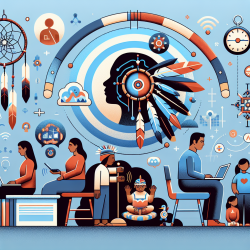Understanding the Opioid Crisis in Native Populations: A Call for Resilience-Based Interventions
The opioid crisis has disproportionately impacted American Indian and Alaska Native (AI/AN) populations in the United States. Despite numerous interventions, the crisis persists due to a phenomenon known as detrimental resilience. This resilience allows the system of opioid abuse to adapt and survive, even in the face of effective interventions. As practitioners, understanding and addressing this resilience is crucial for creating meaningful change.
The Role of Resilience in the Opioid Crisis
Resilience is typically seen as a positive attribute, signifying a system's ability to recover from disruptions. However, in the context of the opioid crisis, it represents the system's ability to resist change, maintaining the status quo of opioid abuse. This resilience is fueled by complex interactions between community characteristics, healthcare systems, and law enforcement practices.
Community: The Underutilized Ally
Community conditions, such as economic opportunities and social capital, play a significant role in the resilience of opioid abuse. AI/AN communities often face unique challenges, including poor working conditions and eroded social capital due to historical policies. Practitioners can enhance community resilience by fostering community-based approaches, such as drug checking programs and integrating prevention services into school curriculums.
Healthcare: Reforming the Approach
The healthcare sector has contributed to the opioid crisis through over-prescription and inadequate pain management alternatives. Practitioners can advocate for reforms that include training medical professionals on appropriate opioid use and expanding behavioral health services. These interventions can reduce the reliance on opioids and address the emotional issues that often accompany substance use disorders.
Law Enforcement: Shifting the Paradigm
Traditional law enforcement approaches have often exacerbated the opioid crisis by criminalizing substance use. Practitioners can support policies that focus on harm reduction and decriminalization, which have been successful in other countries. Good Samaritan laws and the establishment of Wellness Courts can also play a crucial role in reducing stigma and providing culturally appropriate treatment options.
Interventions for AI/AN Populations
AI/AN communities have begun implementing innovative interventions that address the multidimensional nature of the opioid crisis. These include culturally grounded treatment options, telemedicine expansions, and community engagement programs. Practitioners can learn from these examples and advocate for similar approaches in their own practice.
For a deeper understanding of these issues and to explore the original research, please follow this link: Native populations and the opioid crisis: forging a path to recovery.










